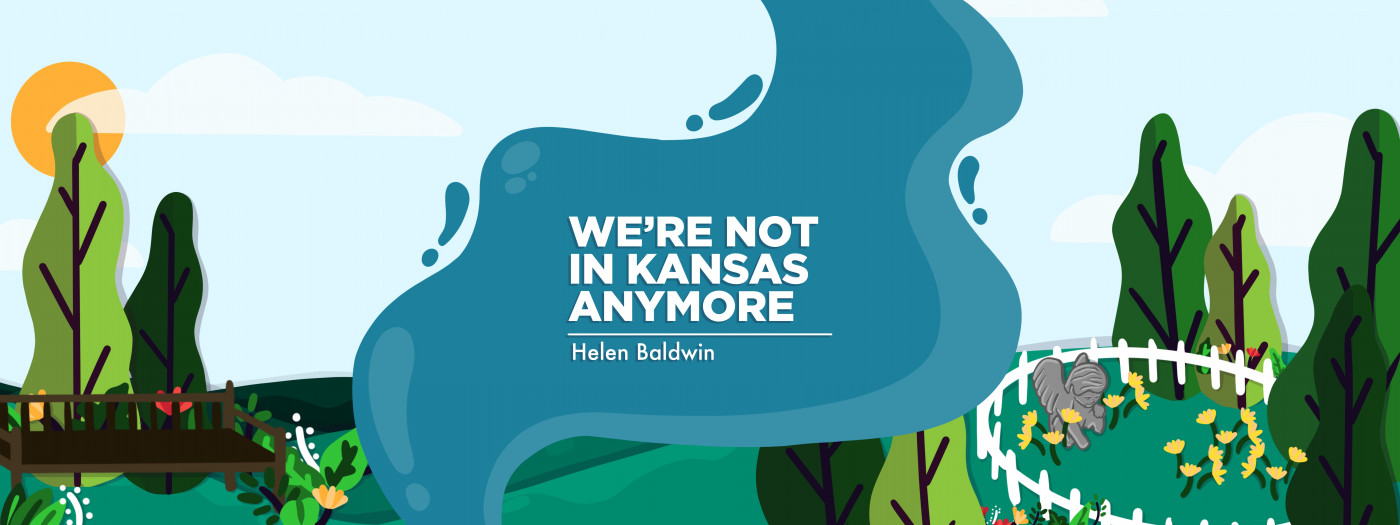When SMA, allergic reaction blisters, and EB (sort of) connect
Yard work offers a reminder of my son's brief life and the community I found

On the afternoon of July 7, 1997, a sickening thud and screams hailed from the front yard. Our older children, Matthew, 10, and Katie, 7, had been playing with our two dogs when one of them, Duffy, darted to chase the mail carrier’s vehicle. The mail carrier couldn’t avoid hitting Duffy, who staggered down the embankment in shock. I followed, somehow hoisting him back up to the road. It didn’t look good.
My husband, Randy, rushed Duffy to the vet. Meanwhile, I took the opportunity to discuss death, heaven, angels, and God’s role with Matthew and Katie. They hadn’t lost any loved one (human or pet) since they’d become old enough to understand. I’d lost plenty and presumed I had a handle on it.
Had I foreseen what was coming in a week, however, I couldn’t have presumed anything.
Poison ivy and SMA
Duffy didn’t make it. A few days later, I experienced horrific itching on both legs, followed in short order by countless oozy blisters. The embankment had apparently been teeming with poison ivy and who knows what else. I was nursing our baby, Jeffrey, so oral medication was out. I hoped I could find something topical to tame things down — fast.
Six days after Duffy’s death, my physician brother, Paul, examined Jeffrey’s abdominal breathing. It hadn’t bothered anyone except Randy at birth, but it hadn’t improved, either. Paul’s findings included a dull-sounding lung and no reflexes.
Trying to rationalize Paul’s discovery, I remained mostly quiet. My legs did not. The fierce itching, exacerbated by astronomical stress of the unknown, escalated into a raging fire on my legs, and I wanted to claw the skin off. I might have, too, if I hadn’t been clinging onto Jeffrey in the rocker.
The following afternoon, July 14, Randy and I drove to Brenner Children’s Hospital, a teaching hospital 81 miles away, for a consultation with a pediatric neurologist. For several hours, doctors-in-training strolled into the room, examined Jeffrey, and weighed in on what might be going on. If anyone had a clue, we weren’t privy to it.
The pediatric neurologist did have a clue, and it came in two parts. Part one was the diagnosis: spinal muscular atrophy (SMA) type 1. Part two, the prognosis. Jeffrey would likely not see kindergarten.
Despite no hope, treatment, and certainly no cure, we set off to do our best and enjoy whatever time we’d have with Jeffrey. Albeit brief, this extraordinary life chapter packed a punch in lessons of gratitude, appreciation for the power of prayer and faith, and the connection to others in the SMA journey … and way beyond.
SMA, epidermolysis bullosa, and Bionews connections
Shortly after Jeffrey’s diagnosis, I met Cindy Schaefer online. Cindy was determining interest in helping form a local chapter of what was then Families of SMA (now Cure SMA). Her son, Kevin (now a Bionews columnist and associate director of community content), would be turning 4 in October. I promised to help however I could.
Sixteen days after Kevin’s birthday, Jeffrey snagged his wings.
A few years down the road, Cindy and I pretended we had free time and penned a blog together as “Lucy” (me) and “Ethel” (Cindy). Cindy’s focus in “The Suite Life of Lucy and Ethel” would be on life with SMA; mine would center on life after. With dreams of bringing in some pennies for our efforts, we searched for fellow bloggers sharing their own stories of special circumstances.
Patrice Williams, now a columnist for Bionews’ epidermolysis bullosa (EB) community, was one. Her newborn baby, Jonah, was in the hospital where Jeffrey had been diagnosed.
Jonah’s own diagnosis was EB, a rare skin disorder in which the skin blisters and tears. The skin is so fragile, mere gentle rubbing can result in tears and blisters. Patrice and her husband, Matt, would need to remain vigilant with wound care and bandaging to help with the blisters, tearing, and unbearable itching.
Our SMA assignment seemed a cinch in comparison with EB.
Blisters, bandaging, and EB reminders
In the middle of the night after working in the yard last week, both of my lower legs itched profusely and incessantly. I slathered hydrocortisone cream over the rashy areas and mercifully finally fell back asleep.
The next morning, I donned new socks recommended for hot temperatures and mowed. After over two hours traversing our uneven ground with the socks irritating the already troubled areas on my legs, I quit in self-defense. I removed my socks to free my legs and gasped at the appearance of several supersized blisters.
That evening at urgent care, the blisters were popped, antimicrobial cream was applied, and gauze was wrapped around my entire lower legs. I was instructed to change the dressings once daily until my legs healed.
I promptly thought about Jonah and his bandaging. I’m trying to be patient and thankful that the blisters and this wrapping process are temporary.
And I continue being thankful that I could just hug my baby.
Note: SMA News Today is strictly a news and information website about the disease. It does not provide medical advice, diagnosis, or treatment. This content is not intended to be a substitute for professional medical advice, diagnosis, or treatment. Always seek the advice of your physician or other qualified health provider with any questions you may have regarding a medical condition. Never disregard professional medical advice or delay in seeking it because of something you have read on this website. The opinions expressed in this column are not those of SMA News Today or its parent company, Bionews, and are intended to spark discussion about issues pertaining to spinal muscular atrophy.








Leave a comment
Fill in the required fields to post. Your email address will not be published.